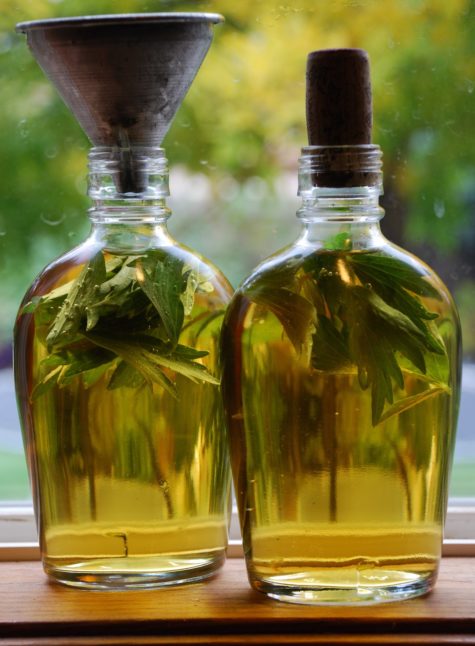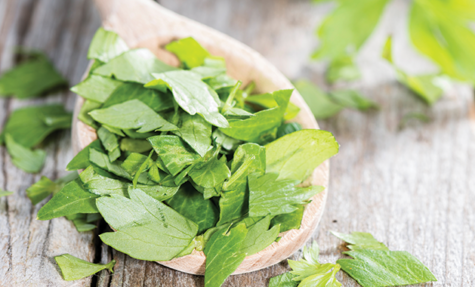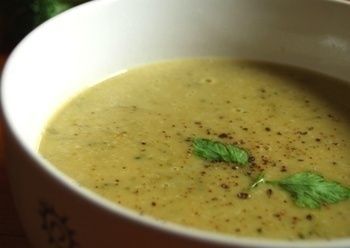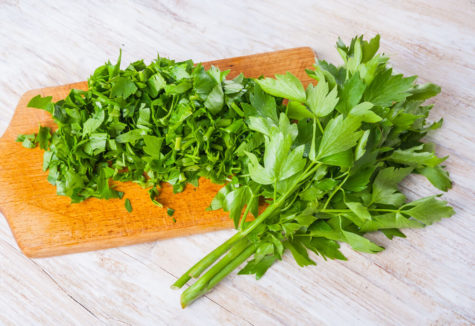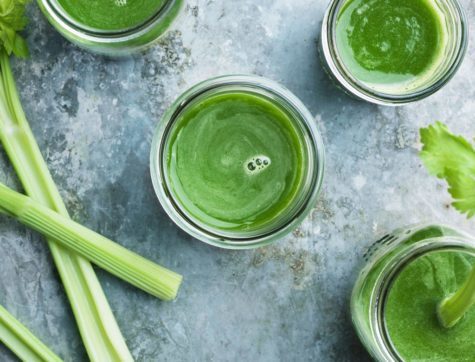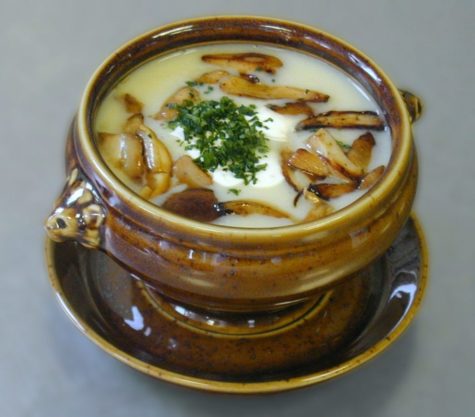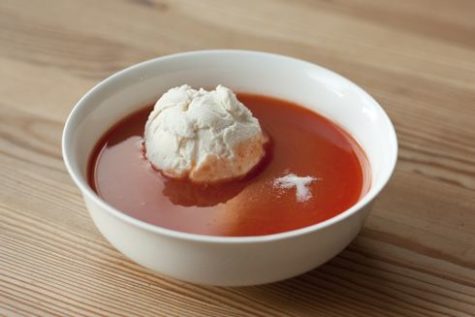Infused Lovage Vinegar
This is a simple lovage recipe that can serve a multitude of purposes in your kitchen.
Fill a clean glass jar about half full with fresh leaves. Fill the jar with vinegar. Rice vinegar is particularly nice here but any would work.
Place a lid on the jar and leave in a cupboard for 2 weeks. Strain the leaves from the vinegar and store the vinegar in a glass jar for use.
Use in salad dressings, it’s tasty as the vinegar in Hot and Sour Soup too. Put it in fancy bottles with nice labels for gift giving.
About Lovage:
Lovage is an ancient healing herb, mostly used for its diuretic properties in cases of water retention and urinary difficulties, and also for pain and swelling (inflammation) of the lower urinary tract, for preventing of kidney stones, and to increase the flow of urine during urinary tract infections.
The seeds, leaves and leaf stems have a strong, earthy, celery flavor that enriches soups and stews and is particularly useful in vegetarian dishes, with rice, vegetable stuffings and nut roasts. More info on this herb can be found at the Encyclopedia of Herbology.
Recipe: Homespun Seasonal Living
Lovage Dip
- 3 hard boiled eggs
- ½ c. fresh lovage leaves
- ¼ c. minced parsley
- sprig of minced tarragon
- 1 c. cottage cheese
- 1 c. sour cream
- pepper to taste
Chill eggs, chop very fine. Mix with rest of ingredients and chill to blend the flavors.
About Lovage:
Lovage is an ancient healing herb, mostly used for its diuretic properties in cases of water retention and urinary difficulties, and also for pain and swelling (inflammation) of the lower urinary tract, for preventing of kidney stones, and to increase the flow of urine during urinary tract infections.
The seeds, leaves and leaf stems have a strong, earthy, celery flavor that enriches soups and stews and is particularly useful in vegetarian dishes, with rice, vegetable stuffings and nut roasts. More info on this herb can be found at the Encyclopedia of Herbology.
Recipe: Amherst Garden Club
Cream of Alexanders Soup
- 3 tablespoons salted butter
- 1 onion, finely chopped
- 1 clove garlic, minced
- 450 g Alexanders stems and leaves
- 1 Ltr vegetable stock
- 1 tablespoon chopped fresh parsley
- 1/2 tablespoon chopped fresh chervil
- Salt and pepper, to taste
- 150 ml single cream
Melt the butter in a saucepan over medium heat. Add the onion and garlic, cook and stir until soft. Add the Alexanders stems and leaves, toss and coat in the butter, onion and garlic. Cook for 2 minutes. Add the rest of the herbs and stir in the salt and pepper.
Pour in the vegetable stock, and simmer gently over a low heat for an hour. Right before serving, stir in the cream and blend the soup to a smooth consistency with a hand held liquidizer or food processor. Serve immediately in warm bowls.
About Alexanders:
Alexanders is native to the Mediterranean but is able to thrive farther north. It was a highly popular herb during the time of Alexander the Great. The Romans called it the ‘pot herb of Alexandria.’
Alexanders was a traditional plant for cleansing the blood and a digestive herb for strengthening the stomach. Seafarers used it to treat scurvy and herbalists used it to relieve stomach and urinary problems. An in depth look at Alexanders can be found in the Encyclopedia of Herbology.
Recipe: Health Benefits Times
Alexanders Seed Bread

A simple, lightly spiced bread which is perfect with savory accompaniments.
- 1 heaped tbsp Alexanders seeds
- 500 g white or wholemeal flour (or half and half)
- Pinch of sea salt
- 1 tsp quick yeast
- 1 tsp sugar or honey
- 400 ml warm water
- 15 ml olive oil (optional)
Roughly grind or chop (you want some texture, not a powder) the Alexanders seeds in a seed grinder or pestle and mortar. You may find them easier to grind if you dry roast them first (140°C for 10-20 minutes), making sure they don’t burn.
Mix the flour, ground seeds and salt in a large bowl. Dissolve the yeast and honey in the warm water and stir into the mix. Combine well and knead the dough for 10 minutes, or until it starts to bounce back. Cover and leave in a warm place until it doubles in size.
When well risen, oil a bread tin, punch the dough a couple of times then place in the oiled tin, cover and allow to rise to double the size again. Heat the oven to 200°C and bake for 40-45 minutes, or until hollow-sounding when tapped.
Remove from the oven and leave to sit for 10 minutes before attempting to take the loaf out of the tin. Allow to cool on a wire rack before slicing.
About Alexanders:
Alexanders is native to the Mediterranean but is able to thrive farther north. It was a highly popular herb during the time of Alexander the Great. The Romans called it the ‘pot herb of Alexandria.’
Alexanders was a traditional plant for cleansing the blood and a digestive herb for strengthening the stomach. Seafarers used it to treat scurvy and herbalists used it to relieve stomach and urinary problems. An in depth look at Alexanders can be found in the Encyclopedia of Herbology.
Recipe: Rachel Lambert
Lovage Vegetarian Stock
Lovage is an ancient healing herb, mostly used for its diuretic properties in cases of water retention and urinary difficulties, and also for pain and swelling (inflammation) of the lower urinary tract, for preventing of kidney stones, and to increase the flow of urine during urinary tract infections.
The seeds, leaves and leaf stems have a strong, earthy, celery flavor that enriches soups and stews and is particularly useful in vegetarian dishes, with rice, vegetable stuffings and nut roasts.
Here is a recipe for a vegetarian stock.
- 4 c. washed lovage leaves
- 6 c. water
- freshly ground pepper.
Simmer about 10 minutes. Use in soups, sauces and stews. Can be frozen.
Celery Juicing
Celery Juice
Plain, fresh celery juice is one of the most powerful healing juices available to us. This clean, green drink is the very best way to start your day. Make this juice a part of your daily routine and soon you won’t want to go a day without it!”
- Thoroughly rinse one bunch of Celery.
- Run it through a juicer.
- Drink immediately for best results.
- Makes about 16 ounces of juice.
If you don’t have a juicer:
- Chop the celery.
- Blend it in a high-speed blender until smooth.
- Strain well.
Here’s what Anthony William has to say about Celery juice:
Don’t let the simplicity of humble celery mask its strength—it’s often the simplest of measures in life that gracefully work wonders in the most complex situations. I believe that celery juice is a miracle juice and that it’s one of the greatest healing tonics of all time. I’ve seen thousands of people who suffer from chronic and mystery illnesses restore their health by drinking sixteen ounces of celery juice daily on an empty stomach. That’s why, long ago, I started the movement of drinking pure, straight celery juice. Since my books came out sharing the benefits of celery juice even more widely, it’s become a global movement. I want to be sure people know how to use this potent drink correctly and successfully because its healing potential is that tremendous.
Celery juice is most powerful when you drink it solo. While it’s great to consume other green juices or vegetables juices and add in items like spinach, kale, parsley, cilantro, and apples, drink those mixed juices at a different time than your straight celery juice. These blends function differently than what I’m recommending as your greatest tool for recovering your health: pure celery juice taken on an empty stomach.
- Eating vs. Juicing Celery: The Difference
Eating celery stalks, while very healthy and important, is not the same as drinking pure celery juice. When celery is juiced, the pulp (fiber) is removed, and I believe its healing benefits become much more powerful, especially for someone with chronic illness. You’ll also be able to consume far more celery as juice than you would by eating it.
I believe that celery juice also increases and strengthens your bile. Strong bile is important for breaking down fats; it’s also needed to eliminate waste from your body. In Liver Rescue, I share hundreds of what I call Liver Troublemakers, which are the specific chemicals, pollutants, pathogens, foods, and more that contribute to a sluggish liver, causing a wide range of health problems that result in chronic illness.
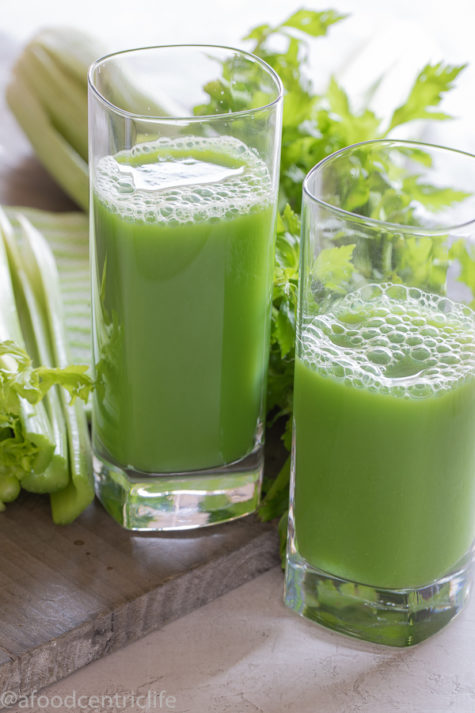
- Celery Juice Tips
Every morning, drink roughly sixteen ounces of celery juice on an empty stomach. Make sure it’s fresh, plain celery juice with no other ingredients. It takes roughly one large bunch of celery to make sixteen ounces of juice. Celery juice is a medicinal drink, not a caloric one, so you’ll still need breakfast afterward to power you through the morning. Simply wait at least fifteen minutes after drinking your celery juice before consuming anything else.
For even greater benefits or if you suffer from a chronic illness or symptom, consider drinking twenty-four to thirty-two ounces of straight celery juice per day. You can drink it all at once in the morning on an empty stomach or split it into two servings as directed below.
If you’re unable to consume your celery juice first thing in the morning before food, then the second-best option is to drink it fifteen to thirty minutes before or after eating something anytime during the day. If you’re having thirty-two ounces a day, you may wish to have it in two sixteen-ounce servings. You can drink the first in the morning on an empty stomach before eating and the second in the late afternoon or early evening, at least fifteen to thirty minutes before eating your next meal.
If you’re sensitive and sixteen ounces is too much, start with a smaller amount, such as two to eight ounces, and increase how much you consume over time. If you’re too sensitive for two ounces, you can try sixteen ounces of straight cucumber juice instead for now. Cucumber juice is very gentle, and you can try celery juice again once you’ve been drinking cucumber juice for a while.
Use organic celery whenever possible. If you’re using conventional celery, be sure to wash it especially well before juicing.
It is best to make celery juice fresh and then drink it immediately. If you’re unable to make your celery juice right before you want to drink it, it’s important to drink it within twenty-four hours of making it. The best way to store the juice is in a glass mason jar with a lid and keep it in the fridge. If you wish, you can also freeze celery juice and drink it as it defrosts. However, I believe the powerful medicinal properties of celery juice will decrease when it’s frozen, so it’s best to drink it fresh whenever possible.
If your mornings are busy, you can save time by rinsing the celery and chopping it (if needed) the night before so it’s ready for you to juice in the morning.
If you find the taste of straight celery juice too strong, you can juice one cucumber and/or one apple with the celery. This is a great option as you get adjusted to the flavor. As you get used to it, keep increasing the ratio of celery; I believe the greatest benefits come when celery juice is consumed on its own. This also means leaving out any lemon, lime, ice, or other added ingredients, all of which change the pure celery juice’s healing benefits. For the best results, think: straight celery. Also, if you find the juice bitter, it may be because of the celery leaves. Some people prefer to leave them on while others prefer to remove them. Both options are great; it’s an individual choice.
Some people may experience a change in their bowel movements when starting to consume celery juice. This is a normal reaction that some individuals may experience. The loose stools will pass as your body heals, and you may notice your bowel movements become more regular and healthier than ever.
Found at: Encyclopedia of Herbology
Lovage and Potato Soup
- 1 ounce butter
- 2 medium onions, finely chopped
- 4 tablespoons lovage leaves, finely chopped
- 3 tablespoons all-purpose flour
- 2 cups chicken broth
- 1 cup milk or heavy cream
- 2 or 3 chopped potatoes
- Salt and white pepper to taste
Directions
Melt butter in a saucepan and gently sauté the onions for 5 minutes or until tender. Add the lovage
Whisk in the flour and cook at medium heat for one minute, stirring constantly.
Gradually whisk in the broth, add potatoes, cover and simmer gently for 15 minutes or until potatoes are tender.
Add the milk, salt, and pepper, bring to a gentle simmer. Do not boil the soup or it will curdle.
You can add carrots or other veggies as you like; just increase the liquid amount (either the broth or the milk) until you reach your desired consistency. If you’re not feeling well, add garlic.
Note:
Although I was told that lovage does not dry well, I have not found that to be the case. I dry the leaves as I would any other plant and put them in airtight glass jars. I later crush or powder them and use when needed for flavoring. The leaves should be removed from the stems prior to drying or they will turn yellow. I try to harvest my leaves before they flower. As with other plants, they will become a bit bitter after flowering.
Source: The Herbal Academy
Wild Rose Blossom Ice Cream
Any fragrant edible blossom will do, so long as it is abundant.
- 100 ml full fat milk
- 200 ml double cream
- 4 cups wild rose blossoms
- 1 tsp vanilla essence
- 2 egg yolks
- 30 grams caster sugar
Pour the milk and cream into a saucepan with the blossoms and vanilla essence. Heat the mixture until it begins to simmer. Remove, put to one side and let steep for 30 minutes. Strain out the blossoms.
Whisk the egg yolks with the sugar until creamy. Then gently pour the cream mixture onto the yolks, whisking all the while. Return the mixture to the saucepan and heat for a minute or two to thicken.
Pour into an ice-cream machine, if you have one, and churn. Otherwise, pour the ice cream into a bowl and freeze. Stir often until it resembles ice cream.
From: Foraging by John Lewis-Stempel
Nyponsoppa – Rose Hip Soup
This Swedish soup, blood red in color, is traditionally served as pudding.
- 600 ml Rose hips
- 2.6 litres water
- 3 tbsp potato flour
- 100 grams sugar
- 4 tsp ground almonds
Rinse the Rose hips and place them in a heavy bottomed saucepan with the water, and bring to a boil. Simmer, stirring occasionally, until the hips are soft – about 20 to 30 minutes.
Blend the hip pulp in a mixer and pass through a fine sieve or jelly bag, returning the liquid to the saucepan. Stir the potato flour into a little cold water, then add to the saucepan, along with the sugar.
Bring to a boil again. Turn down the heat, and let the soup cool. Serve with ground almonds on top. Macaroons and ice cream are also familiar floats in Nyponsoppa.
Serves 4
From: Foraging by John Lewis-Stempel
Healing Juices
Here is a simple list of juices to cure a variety of ailments. Enjoy!
- Arthritis – Carrot, Celery, Pineapple, Lemon
- Asthma – Carrot, Spinach, Apple, Garlic, Lemon
- Cold – Carrot, Pineapple, Ginger, Garlic
- Constipation – Carrot, Apple, Cabbage
- Depression – Carrot Apple Spinach Beet
- Diabetes – Carrot, Spinach, Celery
- Eyes – Carrot, Celery
- Fatigue – Carrots, Beets, Green Apple, Lemon, Spinach
- Hangover – Apple, Carrot, Beet, Lemon
- Headache – Apple, Cucumber, Kale, Ginger, Celery
- High Blood Pressure – Beet, Apple, Celery, Cucumber, Ginger
- Indigestion – Pineapple, Carrot, Lemon, Mint
- Kidney Detox – Carrot, Watermelon, Cucumber, Cilantro
- Kidney Stones – Orange, Apple, Watermelon, Lemon
- Memory Loss – Pomegranate, Beets, Grapes
- Nervousness – Carrot, Celery, Pomegranate
- Stress – Banana, Strawberry, Pear
- Ulcer – Cabbage, Carrot, Celery
